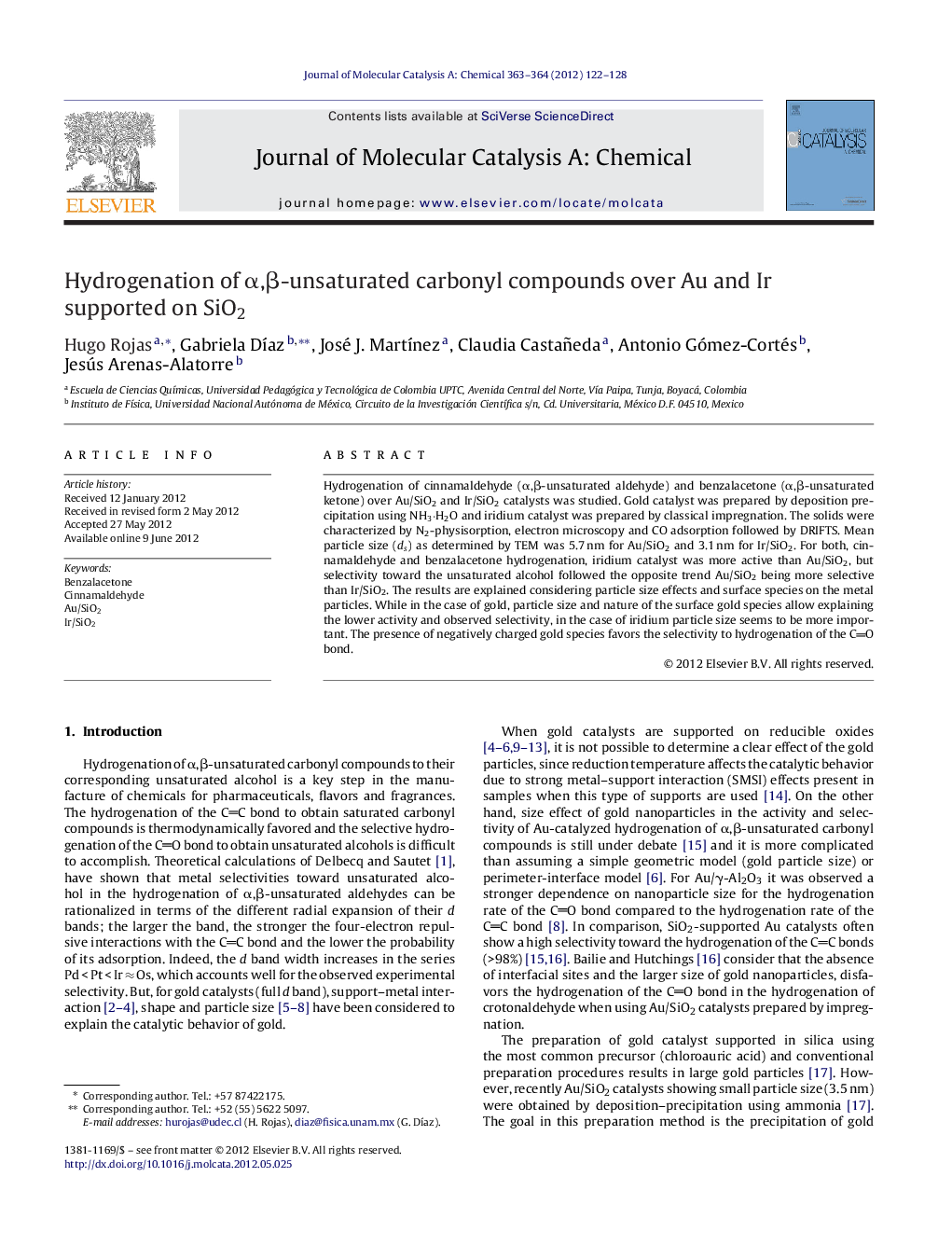| Article ID | Journal | Published Year | Pages | File Type |
|---|---|---|---|---|
| 66017 | Journal of Molecular Catalysis A: Chemical | 2012 | 7 Pages |
Hydrogenation of cinnamaldehyde (α,β-unsaturated aldehyde) and benzalacetone (α,β-unsaturated ketone) over Au/SiO2 and Ir/SiO2 catalysts was studied. Gold catalyst was prepared by deposition precipitation using NH3·H2O and iridium catalyst was prepared by classical impregnation. The solids were characterized by N2-physisorption, electron microscopy and CO adsorption followed by DRIFTS. Mean particle size (ds) as determined by TEM was 5.7 nm for Au/SiO2 and 3.1 nm for Ir/SiO2. For both, cinnamaldehyde and benzalacetone hydrogenation, iridium catalyst was more active than Au/SiO2, but selectivity toward the unsaturated alcohol followed the opposite trend Au/SiO2 being more selective than Ir/SiO2. The results are explained considering particle size effects and surface species on the metal particles. While in the case of gold, particle size and nature of the surface gold species allow explaining the lower activity and observed selectivity, in the case of iridium particle size seems to be more important. The presence of negatively charged gold species favors the selectivity to hydrogenation of the CO bond.
Graphical abstractFigure optionsDownload full-size imageDownload high-quality image (211 K)Download as PowerPoint slideHighlights► Au/SiO2 is more selective than Ir/SiO2 toward the unsaturated alcohol. ► Auδ− species favors the selectivity to hydrogenation of the CO bond. ► Particle size effects are more important on Ir/SiO2. ► It is proposed an approach to explain the hydrogenation of α,β-unsaturated ketones.
